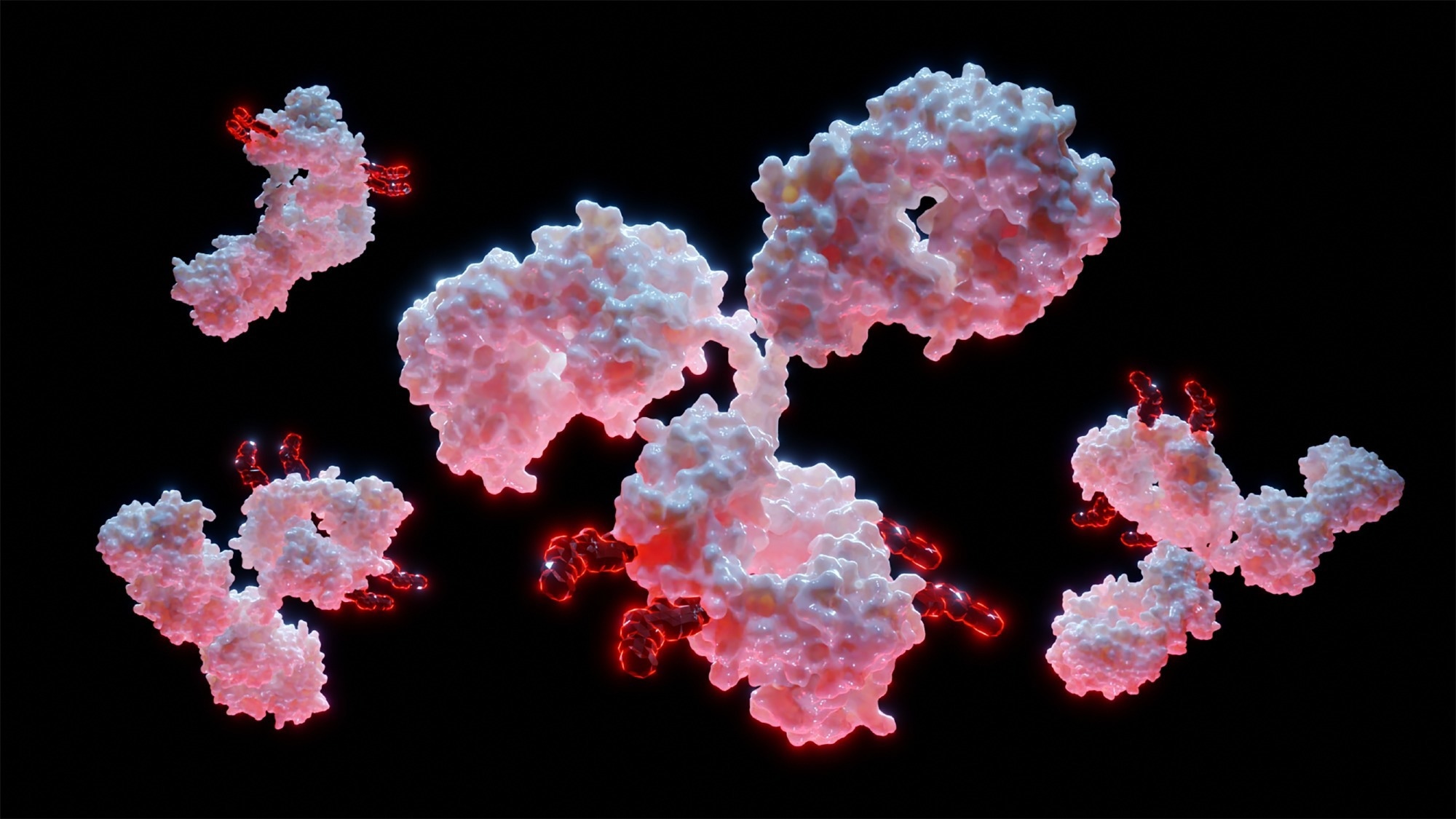A recent Science Signaling study explores a hybrid approach, which involves a combination of conventional discovery and antibody repurposing, to combat severe acute respiratory syndrome coronavirus 2 (SARS-CoV-2) infection, which is the causal agent of the coronavirus disease 2019 (COVID-19) pandemic.
 Study: Broadening a SARS-CoV-1–neutralizing antibody for potent SARS-CoV-2 neutralization through directed evolution. Image Credit: Alpha Tauri 3D Graphics / Shutterstock.com
Study: Broadening a SARS-CoV-1–neutralizing antibody for potent SARS-CoV-2 neutralization through directed evolution. Image Credit: Alpha Tauri 3D Graphics / Shutterstock.com
Background
In addition to the development of new antibodies, significant effort has been directed towards antibody repurposing to manage SARS-CoV-2 infection. Initially, the effectiveness of monoclonal antibodies (mAbs) isolated from SARS-CoV-1 (2003) and Middle East respiratory syndrome coronavirus (MERS-CoV) convalescent individuals were assessed against SARS-CoV-2 infection. However, none of the existing antibodies were able to neutralize SARS-CoV-2.
An antigen-specific B-cell sorting strategy is commonly used in the antibody discovery process. However, two major challenges in this approach include identifying high-quality peripheral blood mononuclear cells (PBMC) for antigen-specific B-cell sorting and determining lead therapeutic candidates. The therapeutic agent must have significant neutralization capacity and an easy large-scale development protocol.
During the early repurposing phase to combat COVID-19, CR3022, a SARS-CoV-1 neutralizing mAb isolated in 2006 from a convalescent donor, gained attention due to its cross-reaction with SARS-CoV-2. However, CR3022 often exhibited no or partial neutralization capacity against SARS-CoV-2, even at the highest antibody concentration.
CR3022 recognizes an epitope outside of the angioetensin-converting enzyme 2 (ACE2)-binding site of the virus. This epitope is highly conserved between SARS-CoV-1 and SARS-CoV-2, with a difference of only four amino acid residues. Alteration in one of these four mutations, P384A, causes a greater reduction in the binding affinity of CR3022 for SARS-CoV-2.
About the study
The current study explores a hybrid refocusing approach that combines repurposing techniques and conventional antibody discovery methods. The new method is focused on engineering the existing neutralizing antibody (nAb) to target a related but resistant virus. Here, the SARS-CoV-1 nAb CR3022 was engineered to target SARS-CoV-2.
A rapid antibody affinity maturation strategy was used to engineer CR3022 variants with greater affinity for the SARS-CoV-2 spike (S) protein. Additionally, a new synthetic antibody maturation technique was developed based on multiple-point loop library enrichments (SAMPLER).
A library was generated based on a starting antibody sequence containing single mutations within the complementarity-determining region (CDR) loops. To isolate clones with improved affinity for the target antigen, newly developed variant libraries were displayed on the surface of yeast as molecular Fab, which was screened using fluorescence-activated cell sorting (FACS).
The library was in an environment that was free from unwanted mutations or mutations that would introduce N-linked glycan motifs. Each CDR loop library contained 100-200 unique coding variants.
The combination of CDR1, CDR2, and CDR3 libraries contained three to four million unique sequences. Each sequence contained a maximum of three mutations from parental CR3022 heavy chain (HC) or light chain (LC) sequence.
Two libraries were initially developed, one of which comprised mutations in the HC paired with unmodified LC (HC library) and the other with mutations in the LC that were paired with the unmodified HC (LC library) and displayed on the surface of yeast. Each of the libraries was sorted four times against the SARS-CoV-2 receptor binding domain (RBD).
After effective sorting, antibody display vectors from the HC and LC libraries were harvested, and the region that encoded the HC and LC was amplified. A new HC and LC library (H/L library) was generated and subjected to a similar sorting phase to identify the best combination of mutations in the HCs and LCs.
A total of 25 engineered CR3022 antibodies were selected after the final H/L library sort and assessed for their in vivo effectiveness against SARS-CoV-2 infection.
Study findings
The engineered CR3022 antibodies were significantly effective against both SARS-CoV-1 and SARS-CoV-2 eCR3022 variants.
Based on the findings of small animal-based experiments, engineered CR3022 antibodies effectively protected animals against SARS-CoV-2 infection. The engineered CR3022 variants were able to neutralize SARS-CoV-2 more efficiently than the SARS-CoV-1.
Consistent with previous studies' findings, the current study reported an association between antibody-antigen binding affinity for the S protein and neutralization potency. Importantly, this refocusing strategy will not be effective when the antibody epitope is significantly different between viruses.
Conclusions
The use of on-chip DNA synthesis to generate the CDR libraries used in SAMPLER optimization enabled the researchers to explore a large segment of theoretical search space within the antibody paratope. Affinity engineering can be performed within one month and does not require PBMC samples from immunized or infected donors, nor does it require structural information about the antibody-antigen interaction. Therefore, the current refocusing technique could be effectively used to combat future outbreaks.